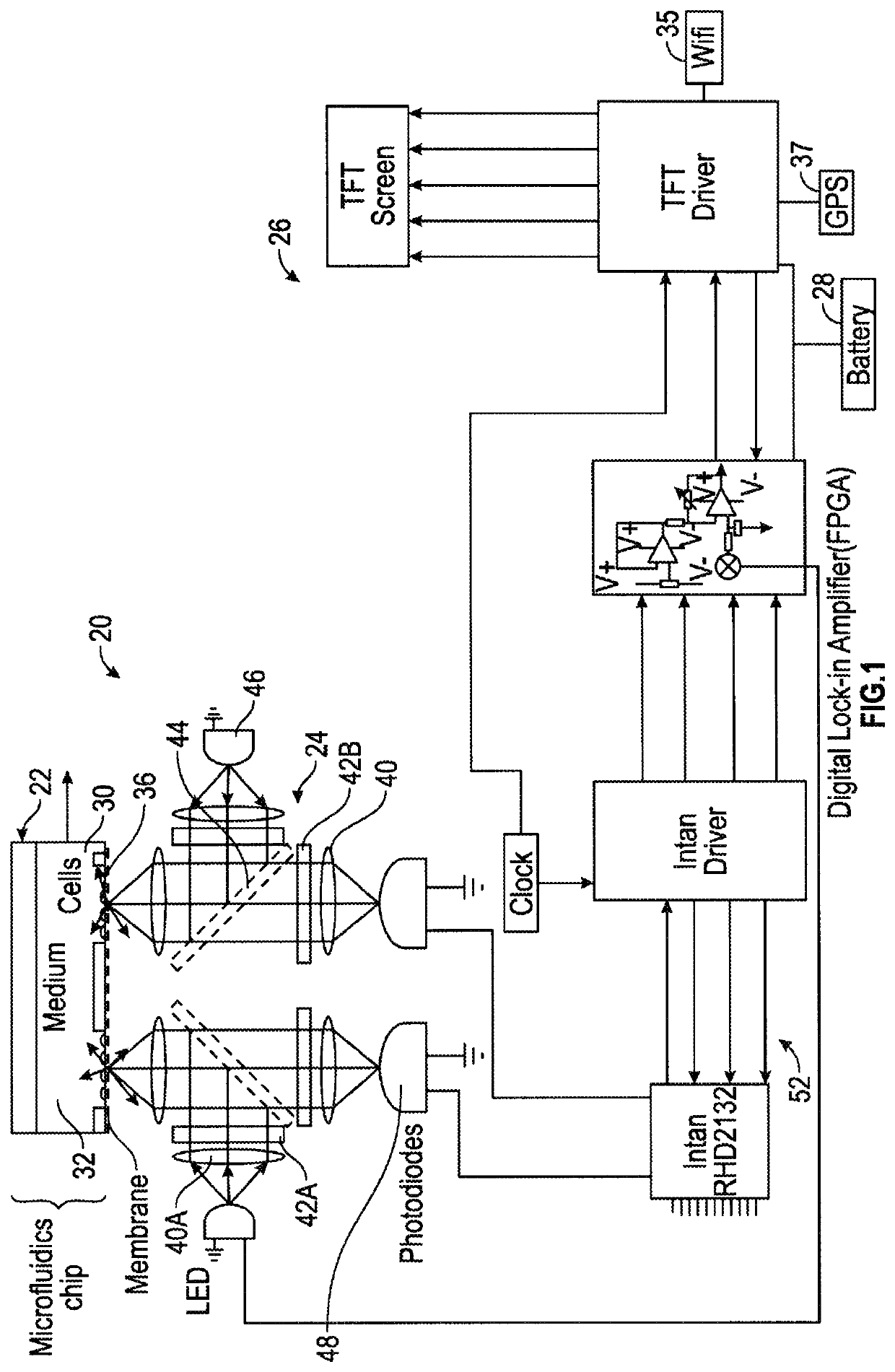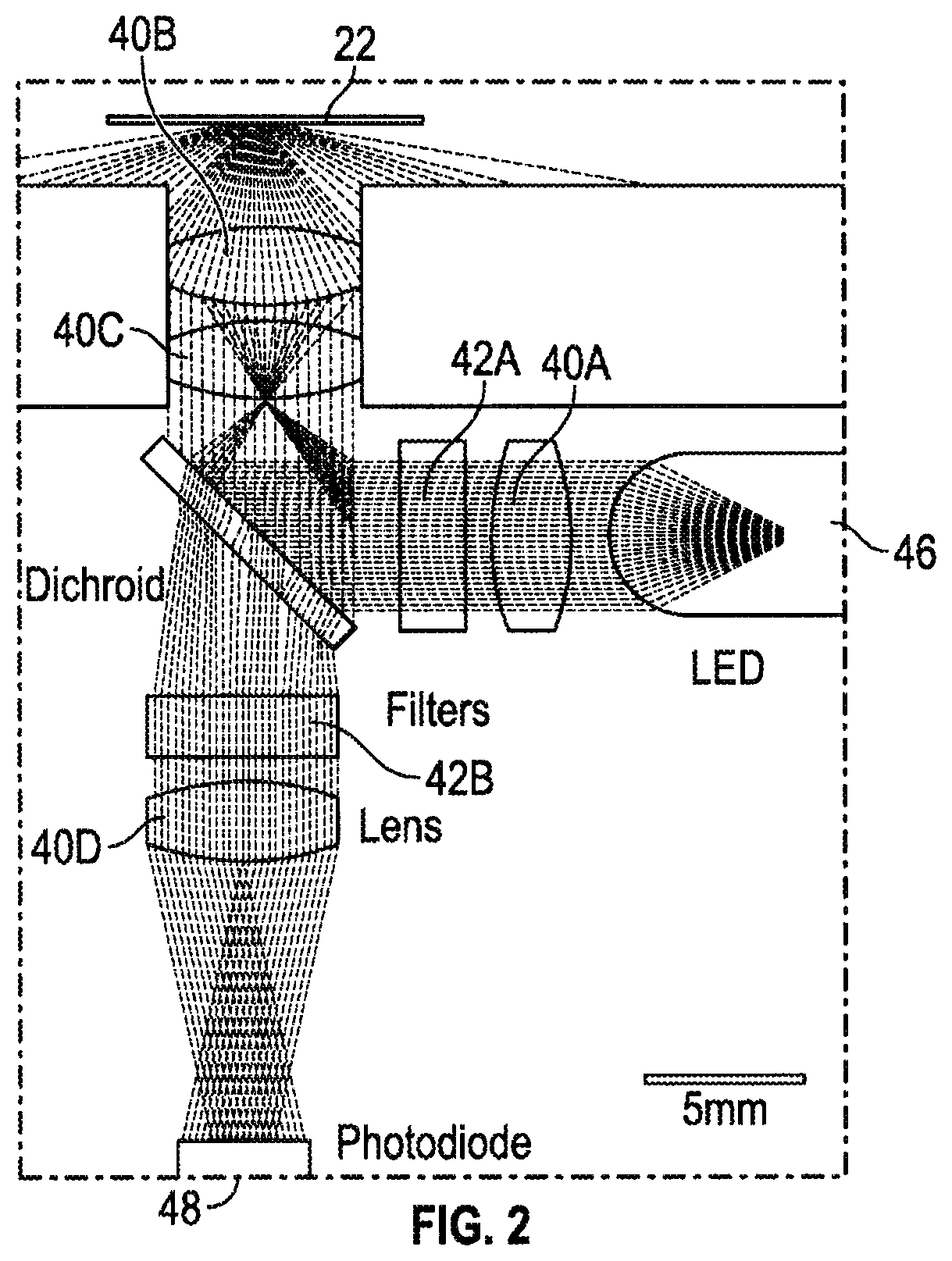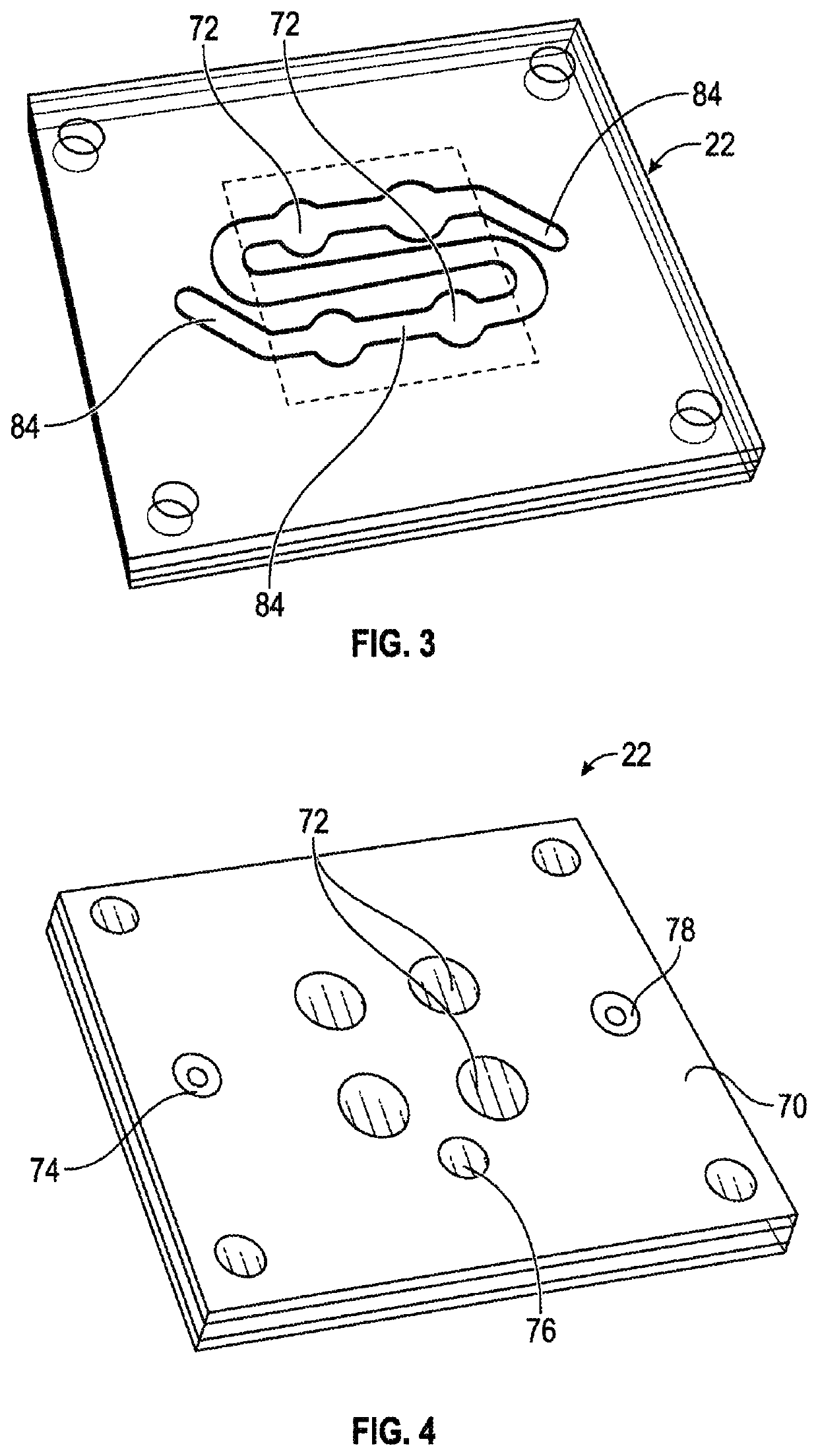System and methods for detection of volatile organic compounds in air
a technology of volatile organic compounds and detection methods, applied in the field of detection of volatile organic compounds, can solve the problems of many vocs that are toxic to humans and the environment, and achieve only varying degrees of success
- Summary
- Abstract
- Description
- Claims
- Application Information
AI Technical Summary
Benefits of technology
Problems solved by technology
Method used
Image
Examples
Embodiment Construction
[0030]Referring to FIGS. 1 and 2, in a basic form, a VOC detection system 20 includes a cell carrier or substrate, such as a microfluidic biochip 22, an optical system 24 and an electronic system 26. The microfluidic biochip 22 contains cells 30, medium or water 32, and a membrane 36 which provides a barrier for the cells against contaminants such as viruses, bacteria and dust. The cells bind to the membrane 36, allowing the cells to more effectively interact with airborne odorants such as VOC's. Each channel or optical pathway of the optical system 24 includes one or more: light emitter, such as a blue LED 46, lenses 40A, 40B 40C and 40D, optical filters 42A and 42B, dichroic mirror 44, and a photodetector such as a photodiode 48.
[0031]FIG. 1 shows an embodiment having two optical pathways each having the above-listed elements, although the system may be designed with a single optical pathway or multiple optical pathways, depending on the intended application. The electronic system...
PUM
| Property | Measurement | Unit |
|---|---|---|
| viewing angle | aaaaa | aaaaa |
| frequency | aaaaa | aaaaa |
| frequencies | aaaaa | aaaaa |
Abstract
Description
Claims
Application Information
 Login to View More
Login to View More - R&D
- Intellectual Property
- Life Sciences
- Materials
- Tech Scout
- Unparalleled Data Quality
- Higher Quality Content
- 60% Fewer Hallucinations
Browse by: Latest US Patents, China's latest patents, Technical Efficacy Thesaurus, Application Domain, Technology Topic, Popular Technical Reports.
© 2025 PatSnap. All rights reserved.Legal|Privacy policy|Modern Slavery Act Transparency Statement|Sitemap|About US| Contact US: help@patsnap.com



